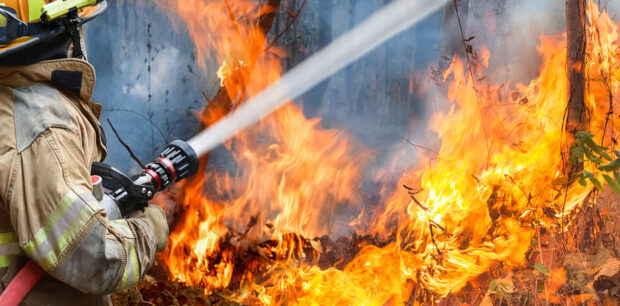Elevated fire risk conditions are predicted for the mid-Atlantic, with normal risk conditions in the Great Lakes and Midwest through 2024, the U.S. Forest Service reported.
“It’s tricky to make longer-term predictions beyond a month for fire risk. Earlier this spring we thought we’d see a higher risk, but that has since passed with the rains,” said Eastern Region wildfire analyst Allan Hepworth.
Eastern Area predictive services meteorologist Stephan Marien agreed, pointing to above-normal precipitation across Minnesota and Wisconsin in recent weeks, shifting from a dry pattern to a wetter one.
“When we were in a moderate to strong El Niño pattern through the 2023-2024 winter season, the north-central part of the lower 48 states saw increased fire risk,” Marien said.
Above-normal temperatures and well-below-normal snowpack across the Eastern Region increased the fire potential heading into the 2024 spring fire season, the U.S. Forest Service reported.
The lack of snowpack led to the availability of fine and uncompacted fuels and leaf litter on the forest floor, which increases risk, Hepworth added.
New England and Missouri have been in and out of drought since 2021, he added.
“It rose in severity and dropped off,” Hepworth said. “That affects current outlooks. Rainfall frequency plays a lot into wildfire risk. You can go five to 10 days without rain without it impacting wildfire risk. Longer than that, it affects wildfire risk. Under a year like we’re having now, if a place doesn’t get rain within three to five days it can affect risk.”
Marien noted that six weeks of the Mississippi River Valley spring wildfire season have already elapsed.
“At this time, we’re hedging back from earlier fire predictions, as we’re getting quite a bit of rainfall coming up that will take the edge out of fire risk across parts of the Eastern Region,” Marien said.
“Fire potential is expected to be near normal across upper Midwest states, called the Western Tier, through the rest of the spring season. However, fire potential will be elevated across the Southeastern Tier, including New Jersey, Maryland and Delaware,” Marien added.
Those states are expected to see less precipitation in the coming weeks.
Human activity is the top cause of wildfires in the eastern United States, the experts said.
Low humidity, lack of precipitation and wind are also factors that increase wildfire risk, they added, noting that in dry years, lightning-caused fires are more common.
Communication of the risks and wildfire mitigation are the best way to keep the public informed.
Prevention, mitigation and education efforts are essential to reduce fire risk each year.
Prescribed burns help to reduce fire fuel loading, which in turn, reduces the risk of large wildfires.
“Wherever the fire environment is conducive to safely and effectively do prescribed burns, we’ll do them to reduce hazardous fuels buildup,” Marien said.
Technology also plays a role in reducing fire risk.
Hepworth said the biggest advancement they’ve had in recent years is using unmanned aerial systems, or drones, to assist in prescribed burns and wildland fires.
These devices are used to safely and efficiently ignite small fires to mitigate the risk and sometimes secure segments of a larger fire.
“We don’t use drones as lookouts, but a feature of them is they do indicate what’s happening on the ground,” Hepworth said. “They have sophisticated technologies to provide a better view of the wildfire.”
Residents can also play their parts to reduce fire risk by paying attention to local conditions and adhering to safe practices whenever they use fire outdoors.




















 Tesla Blasts Off to Top P/C Insurance Growers Chart
Tesla Blasts Off to Top P/C Insurance Growers Chart  Report: Insurers Keen on Replacing Legacy Systems Seek More Agility
Report: Insurers Keen on Replacing Legacy Systems Seek More Agility  PFAS by the Numbers: $165B Ground-Up* Litigation Losses Possible
PFAS by the Numbers: $165B Ground-Up* Litigation Losses Possible  Applied Systems Acquires AI Intelligence Firm Planck
Applied Systems Acquires AI Intelligence Firm Planck 




